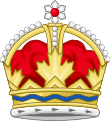| Indigenous peoples in Canada |
|---|
 |
|
|
 |
|---|
In Canada, an Indian band (French: bande indienne), First Nation band (French: bande de la Première Nation) or simply band, is the basic unit of government for those peoples subject to the Indian Act (i.e. status Indians or First Nations).[1] Bands are typically small groups of people: the largest in the country, the Six Nations of the Grand River First Nation had 22,294 members in September 2005, and many have a membership below 100 people. Each First Nation is typically represented by a band council (French: conseil de bande) chaired by an elected chief, and sometimes also a hereditary chief. As of 2013, there were 614 bands in Canada.[2] Membership in a band is controlled in one of two ways: for most bands, membership is obtained by becoming listed on the Indian Register maintained by the government. As of 2013, there were 253 First Nations which had their own membership criteria, so that not all status Indians are members of a band.[2]
Bands can be united into larger regional groupings called tribal councils. A treaty council, or treaty association, has additional meaning and historically in most provinces represents signatory bands of treaty areas. British Columbia is an exception as treaties in most of the province have not been completed. There the treaty councils have been formed in order to negotiate future treaty claims. Another emerging type of organization in British Columbia is the chiefs' council, such as the St'át'timc Chiefs Council. These councils unite bands that are not included in tribal councils with those that are in tribal councils.
Bands also typically belong to one or more kinds of provincial council or similar organization. They also belong to the pan-Canadian Assembly of First Nations (formerly called the Native Indian Brotherhood), chaired by a leader elected by the bands, each chief having one vote, rather than at-large by individual band members. Bands are, to an extent, the governing body for their Indian reserves. Many First Nations also have large off-reserve populations whom the band government also represents; it may also deal with non-members who live on reserve or work for the band.
Non-status Indians, Métis, and Inuit are not part of the system of band governments and reserves. This is one of the major differences between their legal and social situation in relation to the federal government and that of First Nations governed by band councils. The courts have ruled that constitutional reference to "Indians" (section 91(24) of the Constitution Act, 1867) does apply to the Inuit (Reference Re Eskimos 1939) as well as to Métis and non-status Indians (Daniels v. Canada 2013), but the relations of these groups with the federal government are not governed by the terms of the Indian Act.
- ^ "Gateway to Aboriginal Heritage". Canadian Museum of Civilization Corporation. Archived from the original on 2009-10-15.
- ^ a b "Frequently Asked Questions About Aboriginal Peoples". Archived from the original on 2013-09-22. Retrieved 2013-09-19.